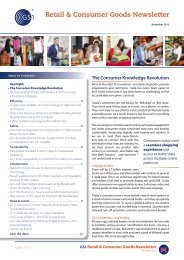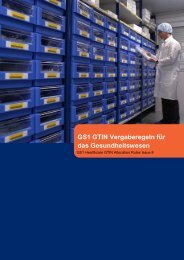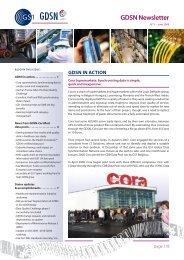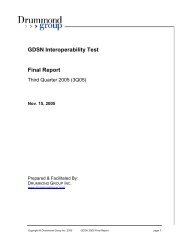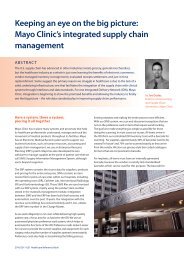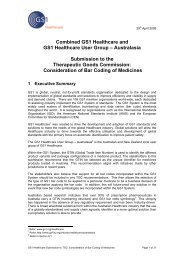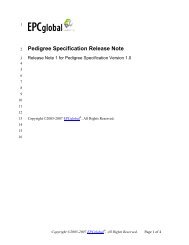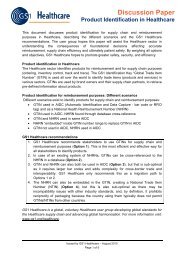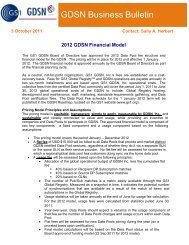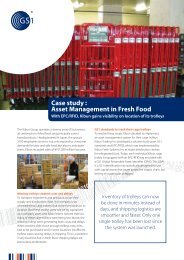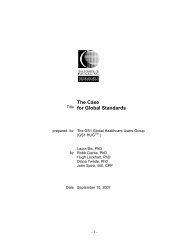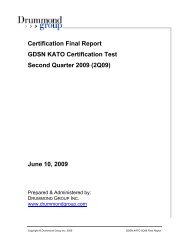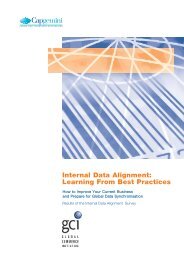Standard International Logistic Label - STILL - GS1
Standard International Logistic Label - STILL - GS1
Standard International Logistic Label - STILL - GS1
You also want an ePaper? Increase the reach of your titles
YUMPU automatically turns print PDFs into web optimized ePapers that Google loves.
<strong>GS1</strong> <strong>Logistic</strong> <strong>Label</strong><br />
Application Identifier (AI)<br />
<strong>GS1</strong> System contains a number of identification keys, e.g. identification of items, companies,<br />
logistic units, etc. These can be encoded in bar codes.<br />
In order for the system to recognise what identification is contained in the number, the AI<br />
is used to show this.<br />
Application Identifier Definition Format of data<br />
00 Serial Shipping Container Code (SSCC) n2+n18<br />
The Application Identifier (00) indicates that the data field contains an SSCC.<br />
The SSCC as part of ISO 15459<br />
A SSCC acts as a « License Plate » from the ISO standards. In fact, ISO defined this standard<br />
to give to each transport unit a unique identification worldwide. This standard allows every<br />
party in the supply chain to work with multiple sectors by ensuring that each transport unit<br />
has an unambiguous identification.<br />
ISO 15459 Part1 specifies the general concept of ISO 15459-1 compliant numbers, which is<br />
a unique, non-significant number for logistic units.<br />
41<br />
ISO/IEC 15459-2 defines technical standards for unique identification of logistic units. It<br />
specifies a unique, non-significant, number for logistic units, represented in a bar code<br />
label or RFID tag attached to the logistic unit to meet these needs, known as the license<br />
plate number.<br />
As logistic units are handled by several parties - the sender, the receiver, one or more<br />
carriers, customs authorities, etc, there is a need to identify the unit so that reference can<br />
be made to associated information such as address, order number, contents of the unit,<br />
weight, sender, etc.<br />
The information is often held on computer systems, and may be exchanged between<br />
parties involved via EDI (Electronic Data Interchange).<br />
There are considerable benefits if the identity of the unit is represented in bar code format,<br />
or other RFID tag, and is attached to the unit so that:<br />
• It can be read electronically, thus minimising errors<br />
• One identity can be used by all parties<br />
• Each party can use the identity to look up its computer files to find the data associated<br />
with the unit<br />
• The identify code is unique and cannot appear on any other item during the lifetime<br />
of the unit.<br />
ISO/IEC 15459-2 defines the unique identification for logistic units represented in a bar code<br />
label; two-dimensional symbol, RFID tag, attached to the logistic unit meets these needs.<br />
© <strong>GS1</strong> 2008



